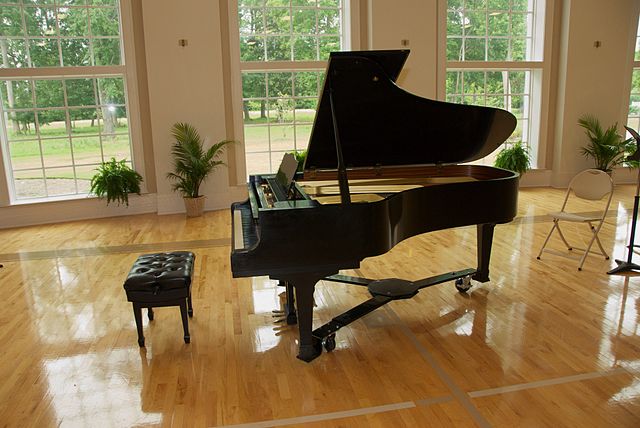Organ vs Piano
Although both organ and piano are keyboard instruments, there are more differences than similarities between them. It is a common misconception that if one knows how to play an organ, they can easily play a piano. However, a piano player may be able to play an organ, but an organ player may be clueless when asked to play a piano. To clarify, here are a few points on which the two keyboard musical instruments differ from each other. At a glance, both a piano and an organ look similar as they require the percussion of keys. However, the mechanics behind the working of these keys is very different in the two instruments. Interestingly, while a piano is classified as a percussion instrument, an organ is an instrument of the wind or brass family.
Key Takeaways
- A piano is considered a percussion instrument, whereas an organ is classified as a woodwind or even as a brass family member.
- Piano keys need to be re-struck to keep the sound effect, whereas organ keys keep the effect beautifully for a long time period.
- Piano can only produce the piano sound, however, it is possible to play an organ like a brass, reed, or a woodwind instrument.
What is an Organ?
An organ produces sound using air power. When a player hits a key in an electronic organ, they do not strike anything, but an electronic circuit gets completed upon depression of a key that produces a sound. The keys are tuned to different frequencies, but there is no need to re-strike the keys to keep the sound produced going. Also, one needs to just keep the keys pressed to have a longer sound. The sound produced by the organ is more of a follower than a leader, and as such, it follows after a vocal singer. It is possible to play an organ like a brass, reed, or a woodwind instrument. Pipes can be used to make an organ sound differently depending upon the requirements.
What is a Piano?
A piano produces sound using percussion. The keys of a piano are attached to a hammer, and whenever a pianist strikes a key, the hammer strikes a string held in high tension, to produce a different sound. All the strings inside the piano are tuned to specific frequencies, so a pianist can create various notes and chords by hitting several keys at the same instant. The sound produced does not last for a long time, and to maintain the effect, a pianist needs to re-strike the keys to keep on going. A piano is a lead instrument in a choir or church congregation; it can actually perform an introduction, before lyrics are produced. Not much can be done to change the sound of a piano. Even the little differences that you can do to tune the piano will get you only the piano sound. That is because, the piano is made to sound like a piano.
What is the difference between Organ and Piano?
• Although both a piano and an organ are keyboard musical instruments, a piano is a percussion instrument, while an organ is classified as a woodwind or even as a brass family member.
• Piano keys, when struck, hit a hammer that hits a wire in a state of high tension set at a pre-set frequency. On the other hand, there is no such hammer in the case of an organ. Instead, in an organ, an electronic circuit gets completed upon depression of a key that produces a sound.
• Piano keys need to be re-struck to keep the sound effect, whereas organ keys keep the effect beautifully for a long time period. In other words, while a pianist needs to re-strike to sustain the sound, the sound remains for much longer with the keys of an organ.
• Piano acts as an introducer and a leader in a composition, whereas an organ works more as a follower than a leader.
• Piano can only produce the piano sound. However, it is possible to play an organ like a brass, reed, or a woodwind instrument.
• A pianist has to pay attention to the physical structure of a percussion instrument. This is because, a piano is a percussion instrument. A pianist also has to practice complex chords and have good practical knowledge of fingering.
• An organist has to pay attention to playing bass notes. He has to play these bass notes using the foot keyboard while he is controlling various volume pedals appropriately.
In the end, it boils down to the taste and preference of a musician to go for a piano or an organ in his composition. On a more individual level, different sets of skills and dexterity levels are required from the player when he is playing either of the two instruments.
